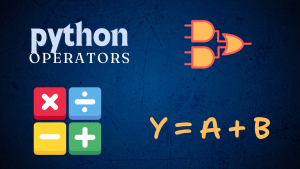The logical AND operator (and) in Python is a fundamental tool for evaluating conditions and controlling program flow. It plays a crucial role in decision-making, ensuring that multiple conditions must be true for a specific action to take place. This article will delve into the intricacies of the and operator, providing you with a comprehensive understanding of its syntax, behavior, and practical applications.
Understanding the Logical AND Operator
The and operator in Python performs logical conjunction. It evaluates to True only if both operands on either side are True; otherwise, it evaluates to False. Let's break down its functionality with a simple truth table:
| Operand 1 | Operand 2 | Result |
|---|---|---|
| True | True | True |
| True | False | False |
| False | True | False |
| False | False | False |
Syntax and Usage
The syntax for using the and operator is straightforward:
operand1 and operand2
Here, operand1 and operand2 can be any expressions that evaluate to a Boolean value (either True or False). The operator evaluates from left to right, short-circuiting if the first operand is False. This means that if the first operand is False, the second operand will not be evaluated at all.
Practical Applications
The and operator finds extensive application in various Python programming scenarios:
1. Conditional Statements
The and operator is indispensable in conditional statements, allowing you to create complex conditions based on multiple factors.
# Example: Checking for valid age and password
age = 25
password = "secret"
if age >= 18 and password == "secret":
print("Access Granted")
else:
print("Access Denied")
Output:
Access Granted
2. Loop Control
The and operator can be used in conjunction with for or while loops to control their execution.
# Example: Iterating through a list until a specific condition is met
numbers = [1, 2, 3, 4, 5, 6]
for num in numbers:
if num % 2 == 0 and num > 3:
print(num)
break
Output:
4
3. Function Arguments
You can use the and operator to set default arguments for functions based on multiple conditions.
# Example: Function with conditional default arguments
def greet(name, language="English"):
if language == "English":
print(f"Hello, {name}!")
elif language == "Spanish" and name == "Juan":
print(f"Hola, {name}!")
else:
print("Language not supported.")
greet("Alice")
greet("Juan", "Spanish")
Output:
Hello, Alice!
Hola, Juan!
Interesting Fact
The and operator has a close connection to the concept of "logical conjunction" in mathematical logic. This concept is used to represent the truth value of a proposition that combines two or more other propositions, where the combined proposition is true only if all individual propositions are true.
Conclusion
The and operator is a crucial component of Python's logical operations. Its ability to evaluate multiple conditions and control program flow makes it invaluable for creating robust and expressive code. By mastering its usage, you gain a powerful tool for building sophisticated logic within your Python programs.


